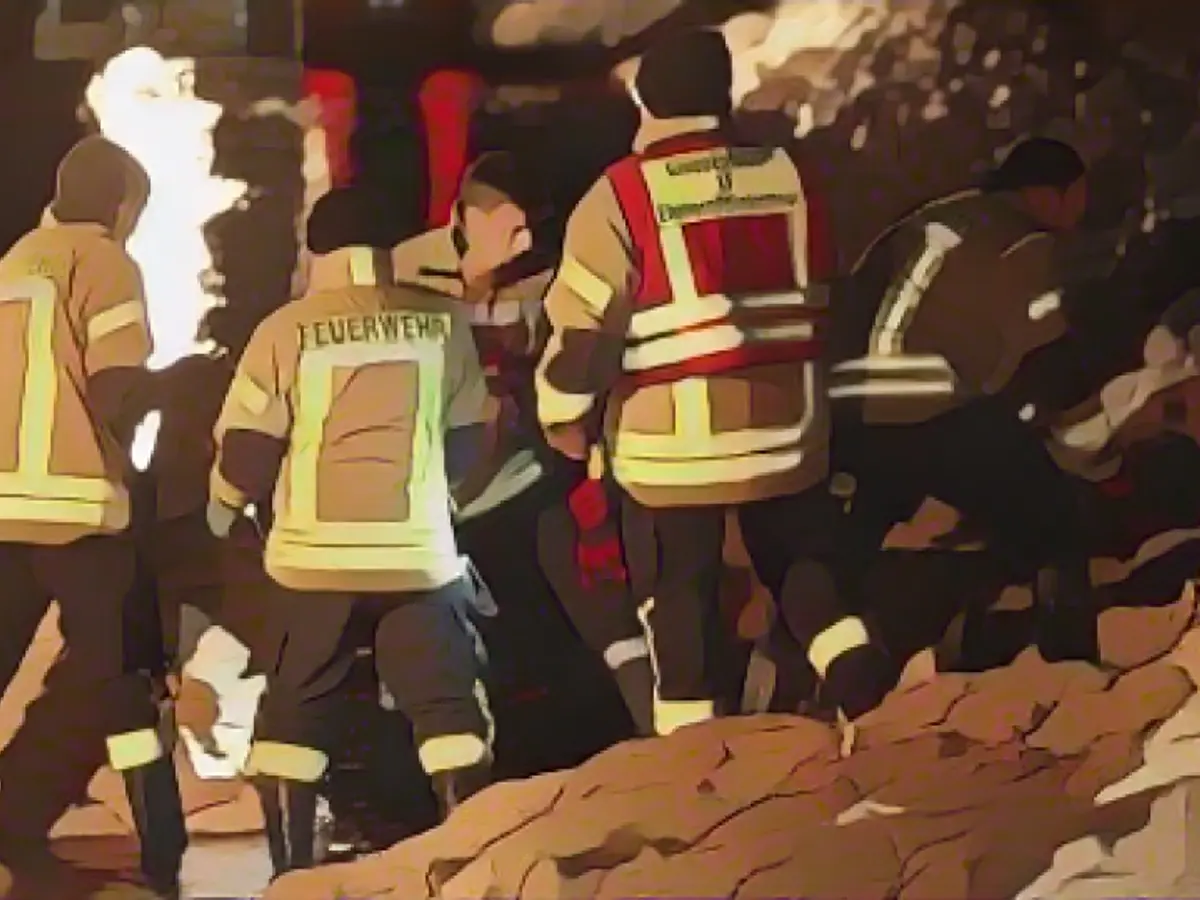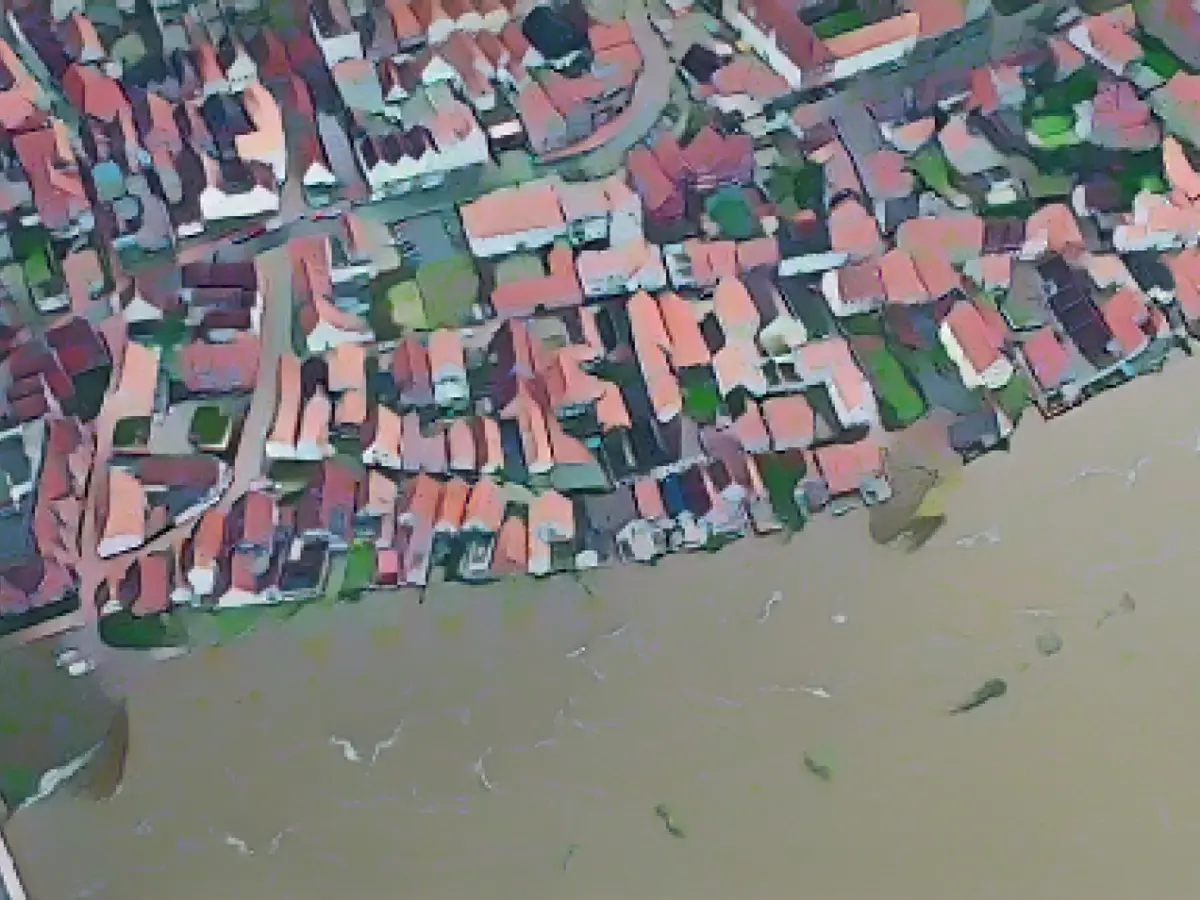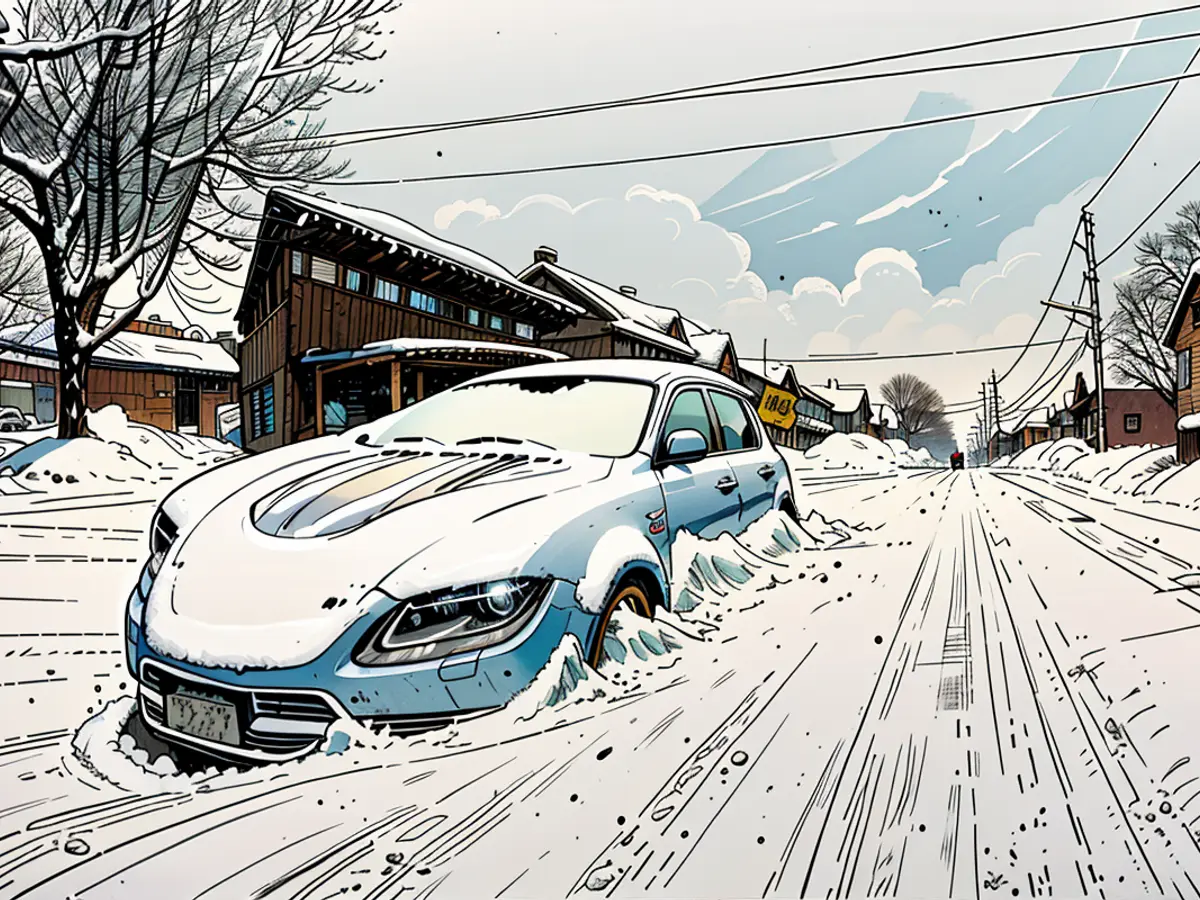Floods in Germany - Slight flood warning in Dresden - situation in Lower Saxony remains tense
The situation in the flood areas remains threatening. The German Weather Service (DWD) has forecast further rainfall. "There will be a good amount of rain again until Saturday, but not in such large quantities," said DWD meteorologist Christian Herold in Offenbach on Friday morning. After that it will weaken a little. According to Herold, the largest amounts of rain are expected on Friday and Saturday in the north of North Rhine-Westphalia. In the north in the Bremen and Hamburg area, the meteorologist expects less precipitation.
In Lower Saxony, however, the situation is still tense. Although fears of a storm surge have not yet been confirmed and the flood situation varies from region to region, the all-clear cannot yet be given for the whole of Lower Saxony, said state fire director Dieter Rohrberg in Hanover on Friday. According to him, the situation is shifting locally from the Harz Mountains towards the districts of Celle and Oldenburg.
The water is still rising on the Weser
In Lower Saxony, areas along the rivers Aller, Leine, Oker, Hase and Weser in the southern and central part of the state are affected. The water level measured on Friday morning exceeded the highest reporting level in many areas. Downstream of the Weser, the water levels would continue to rise, according to a situation report by the State Agency for Water Management, Coastal Defence and Nature Conservation (NLWKN). In the lower course of the Middle Weser in particular, it is therefore not yet possible to speak of an easing of the situation.
In an interview with Deutschlandfunk radio, Lower Saxony's Interior Minister Daniela Behrens emphasized that lessons had been learned from previous floods and that the state and local authorities had invested a great deal of money in flood protection and technical equipment. Operational concepts for the flood situation have worked very well so far.

On Friday morning, it was reported that a so-called exceptional event had still been declared in six districts and the city of Oldenburg. This means that districts can, for example, access emergency services more easily.
On Thursday, the dykes were no longer able to withstand the masses of water everywhere and others threatened to become unstable. Evacuations were prepared in some places. In the municipality of Langlingen, around 120 people left their houses and apartments as a precautionary measure on Friday night, and the evacuation of a street in Lilienthal began.
The all-clear has not yet been given around Bremen either. According to the authorities on Thursday evening, numerous houses along the Wümme in the Katrepel area are surrounded by water and without electricity. Most of the residents had left the area. In the district of Timmersloh, the water is standing on the dykes. Roads and fields were flooded. According to the interior authorities, measures have already had to be taken several times to secure the dykes.
"Major flood situation" in NRW
Despite stagnating or falling water levels, the Ministry of the Environment has not given the all-clear for North Rhine-Westphalia either. "We still have a major flood situation", said NRW Environment Minister Oliver Krischer (Greens) in Düsseldorf on Friday. So far, the consequences have remained manageable and there have been no casualties. There was no danger of dams bursting at the reservoirs and no uncontrolled overflow. The flood protection systems had held.
In eastern Germany, many fire departments are also still in continuous operation. At least there is some good news from Dresden. In the Saxon state capital, the Elbe remained below the expected water level of six meters. The normal level is two meters. A flood protection gate is already being dismantled, it was reported. Dresden's environmental mayor Eva Jähnigen (Greens) explained on Deutschlandfunk radio this morning that alert level 3 should be reduced in the course of Friday. All protective measures had been effective and there had been no major damage so far.
The water level of the Elbe has been falling again since Friday night, according to data from the state flood center. The Elbe briefly reached a level of 5.95 meters. The risk of flooding has now been completely averted for the other rivers in Saxony, the State Environment Agency announced on Friday.
Dyke in Thuringia opened in a controlled manner
In northern Thuringia, a dyke on the River Helme was opened in a controlled manner to avert the danger of flooding on the state border between Thuringia and Saxony-Anhalt. The water is now flowing onto fields, the district of Kyffhäuserkreis announced on Friday night. The opening had been necessary because water had been deliberately released from the overloaded Kelbra reservoir for several days and the Helme was carrying a lot of water as a result. The highest flood alert level 4 has been in force for the Helme for two days. According to the district, firefighters have been laying around 6,000 sandbags since Thursday to protect the small village of Mönchpfiffel-Nikolausrieth and to raise the dykes.
The situation in the village of 300 inhabitants eased on Friday. The water in the Helme was "running off as planned", said a spokesman for the Kyffhäuserkreis district office. However, the all-clear has not yet been given. The water level of the Helme is being constantly monitored and a crisis team from the district is still in action.
The Pretzien weir near Magdeburg and Schönebeck in Saxony-Anhalt was opened on Thursday. This means that around a third of the Elbe water is diverted past the two towns through a bypass channel and across meadows and fields before flowing back into the Elbe.
Read also:
- Rain expected again: The situation in the flood areas remains threatening
- Flood situation remains tense - weir on the Elbe is opened
- Fallen trees, train cancellations, storm surge - "Zoltan" blows through parts of Germany
- While the railroads are on strike: weather service warns of "danger from black ice" in many parts of Germany
- The forecast from the German Weather Service (DWD) indicates that further rainfall will occur in North Rhine-Westphalia's north, particularly in areas like Oldenburg, causing concern in flood zones.
- Despite current flood warnings and tense situations in regions like Lower Saxony and Dresden, Christian Herold from DWD suggests that the rainfall will not be as intense as before.
- According to state fire director Dieter Rohrberg, the flood situation in Lower Saxony remains unpredictable, shifting from the Harz Mountains towards districts like Celle and Oldenburg.
- Despite investments in flood protection and operational concepts, Daniela Behrens, Lower Saxony's Interior Minister, emphasized the importance of lessons learned from previous floods.
- In the flood-affected areas in the northern and central part of Lower Saxony, the water levels on the Weser, Aller, Leine, Oker, Hase, and other rivers continue to rise, surpassing the highest reporting level.
- The city of Oldenburg has declared an exceptional event in six districts, which enables districts to access emergency services more easily, according to current announcements.
- In North Rhine-Westphalia, Oliver Krischer, the state's Environment Minister, acknowledges that they still have a major flood situation, despite no reported casualties or dam failure incidents.
- In Dresden, the Elbe remains lower than the anticipated water level of six meters, with the planned removal of flood protection gates, indicating a reduction in the alert level 3, as reported by the city's environmental mayor Eva Jähnigen.
Source: www.stern.de








